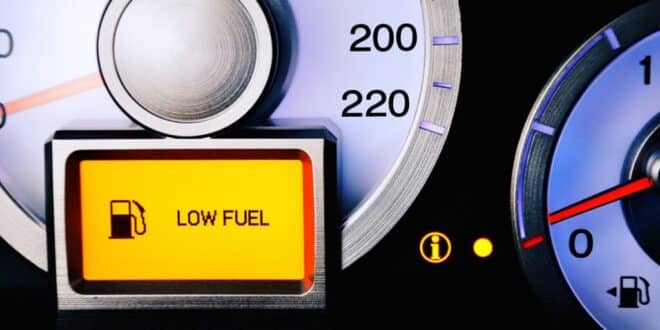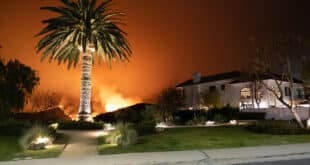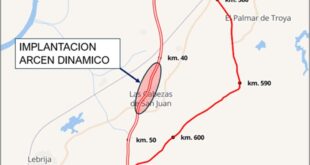Low fuel light on? Pull over safely and signal—letting the car splutter to a halt can lead to a €200 fine in Spain.
Credit: TetyanaRusanova / Shutterstock
We’ve all done it. As you cruise along listening to your favorite podcast, the low-fuel indicator blinks. I’ll be fine until the next station. After a few kilometres the engine starts to sputter, you start to coast on the hard shoulder as your heart rate reaches the red.
Here’s the bit many motorists don’t realise: in Spain, that little drama can end with a €200 fine – not for running out of petrol, but for what you do next.
Is running out of fuel illegal – and why are fines being issued?
Running dry is not a traffic offense in Spain. Guardia Civil does not patrol the motorways asking for your fuel cap. The Guardia Civil is cracking down because of the chaos it often causes: abandoned cars in the middle lane, drivers crossing the carriageway and not warning approaching traffic. If your breakdown creates a hazard or an obstruction, expect a penalty of up to €200.
Imagine this: The law will not punish a mechanical failure, but it will punish you if that failure becomes a safety hazard. That’s why you’ll sometimes hear about officers paying attention to the filler area after an emergency top-up – unsecured caps, spilled fuel and rushed re-starts are all safety risks.
What if you’re caught short? Do this to stay safe – and ticket-free
Act as you would for any fault developing: be calm, visible and get out of your way.
- Early warning is important. When you start to lose power, turn on your hazards. Drift right and aim at an emergency bay or slip road. Roll another 50 metres for a safer location.
- Only step out if it’s safe — and in hi-vis. Put on a reflective vest Then, Open the door. If there is a barrier in place, make sure passengers are behind it.
- Warn everyone else. Triangles are still allowed in 2025, but the V-16 roof beacon (magnetic, bright, and visible from far away) is faster and safer – and becomes compulsory next year. Keep your hazard lights flashing.
- Call for assistance. If the situation is dangerous, call your insurance’s roadside help or 112. If your policy does not cover fuel delivery, then you will be towed.
- Fill up your tank properly. If – and only if – it’s safe to walk, buy an approved container from the petrol station. No making-do funnels or using squash bottles.
You’ve achieved what the officers want: traffic safety, risk management. No fine.
What can you be fined for?
This is the place where people who are otherwise intelligent can make a mistake:
- When a safe refuge is within reach, you should not stop in the live lane.
- No warning — no hazards, no triangle/V-16, no hi-vis — leaving you invisible until the last second.
- Families milling around while refuelling on the roadside.
- Walking along the edge of an autobahn to “save the time” is a great way to play the hero.
- Rejoining in a rush – fuel cap not secured, warning lights ignored, kit still on the tarmac.
Remember, you’re not punished for bad fortune; the penalty is for creating a danger.
An empty tank won’t automatically cost you €200 in Spain. It will cost you more if it becomes a safety hazard. Give yourself a margin (don’t let the gauge sink below a quarter on long runs), carry a V-16 beacon now rather than later, and if the worst happens, think vest → beacon → safe bay → call. Your wallet — and everyone else on the road — will thank you.
 Costa News Spain Breaking News | English News in Spain.
Costa News Spain Breaking News | English News in Spain.





